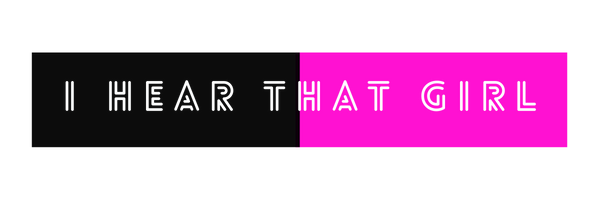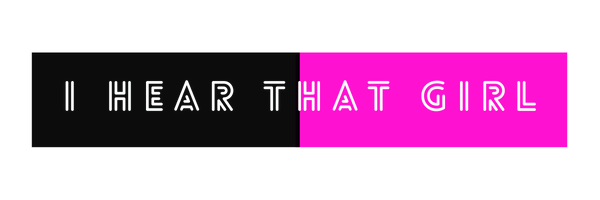The event to “break the divide between communities, and bring youth from all areas of Chicago in solidarity with Black Lives Matter,” drew more than 1,000 people and the attention of local and national media—not bad for a group of 16- and 17-year-olds who organized the whole thing on social media. The silent sit-in was followed by poetry and other performances, and the group gained steam as it left the park and closed down the streets, marching toward Federal Plaza to meet up with another, unaffiliated group of protesters.
Though the two rallies were spurred by the same news events of the previous week—the police shootings of Philando Castile and Alton Sterling, and the subsequent attack on police in Dallas—they differed in both their focus and their methods, Lewis explains. More on that later.
When the 17-year-old rising senior at Walter Payton College Prep is asked to describe herself, she first identifies herself as a member of Bomic Sans (“You know, like the font Comic Sans?”), Payton’s team in the Louder Than a Bomb youth poetry competition. She’s an artist. An activist. And advocate. She ticks off an impressive list of achievements—among them, being asked to speak in front of the United Nations during the Commission on the Status of Women earlier this year.
We spoke with Lewis after she finished her day’s work as an intern at Stony Island Arts Bank to find out how Monday’s protest came together.
Start from the beginning: How did you get the idea for the rally?
I didn’t decide it. This girl that I knew from my old school, Maxine Wint [16], she [and Sophia Byrd, 17,] had an idea. They know each other from Chicago Children’s Choir. Maxine posted on Twitter that she wanted to have a sit-in on Monday. They hadn’t organized a real protest, a big thing, before. I hadn’t organized one either, except I’d been behind the scenes for some of the Chicago Public Schools protests that have happened this year, helping with press releases, inclusivity, stuff like that. So I offered to help. Natalie Braye, she’s 16, she had also communicated with Maxine. All three of us used to go to Kenwood.
So you got your team together. What happened next?
I said, we need a group chat. Then they said we need a press release, and I had just learned how to do that. I said, we need goals, we need a purpose. What we wanted was this to be a peaceful protest. We had a goal of no arrests, which seemed impossible, because I hadn’t heard of a protest with no arrests—like this weekend was wild.
There were protests all late last week and weekend. Did you go to them?
Nope. I’m 17 years old. Although I have a lot of ideas, and I’m an activist, I’m aware constantly that I’m a minor, and that I don’t want to put myself in a dangerous situation. Which is why we did [our sit-in] during the day, because we didn’t wanna be out in the dark. Also, mental health is so important and those deaths [of black men at the hands of police] are so tolling. You have to be in a mentally prepared state to do a protest. Having it on Monday gave me the right amount of time.
What do you do to prepare for something like that?
I pray. I sung to myself gospel songs. It makes me feel calmer, ’cause then I’m promising myself in my spirit that I’m gonna be safe and everyone’s gonna be safe, and whatever is God’s will is gonna be done. My mom prayed too, and my grandma. They are so proud of me.
So your family is supportive of what you’re doing?
Oh yeah. I learned everything I know from them. And my grandfather, too—he just passed away. He was the first person to teach me that my gender didn’t matter, that I shouldn’t be ashamed of my gender at all. He empowered me. He taught me about the system young, about racism. [My family] taught me that I should never think I am less than, I just have to work harder to be recognized for my work.
You say you’re an activist and advocate. What does that mean?
[At the UN headquarters], that’s where I learned about the difference between advocate and activist. I decided I want to do both. An activist shines light on issues that are happening. An advocate feeds off that energy, and brings it to the office space to talk with politicians about policy change. Because activists make the issue more relevant for the politicians. You can’t be an advocate if someone isn’t an activist in the first place.
You guys were very clear at the outset that your event was “not anti-police, it’s anti-racism,” and that you wanted no arrests and no violence. How did you interact with police at the rally?
Learning that [difference between activists and advocates] is what made yesterday so important. I shared that idea with the other three organizers. We were able to advocate with the police, we worked together with them. There was one officer, Officer Ryan, I think? He was really nice and understanding, and wanted to make sure we had control of everything. It wasn’t necessarily collaborating with police, because we don’t want the misconception that we were asking for permission—it was more so like a respectful interaction.
There’s a lot of misconceptions when it comes to [police] dealing with people. They think of Black Lives Matter and youth—they might think, ugh, they’re gonna be this, that, and the other. But [the negative perception] was off when it came to us. They said they were impressed and they told us that we were gonna go places, that they wouldn’t mind [working a protest] again. Because we didn’t have a single arrest, and we kept things under control, especially being so young.
Have you been to protests in the past?
When Trayvon Martin was killed, that was the first time I realized the stuff in the history books was present day. My mom and I, we protested together. It was on Michigan [Avenue]. We were protesting gun violence and police brutality and general violence. It was my first encounter with activism, right before I started high school.
What do you remember most about that?
There was power in people’s voices. That solidarity, that love, that sense of community, and that sense of hope. It really resonated with me. There was also a shock when he died. Everyone in my generation was like, oh my god, the Civil Rights movement isn’t over. It was scary. I knew racism was a thing but it hadn’t resonated that it was a systemic thing. To get that shock at 14 years old … I dunno how to describe that. It hurt. Especially when Zimmerman got away with it.
Back to Monday’s protest: Who else helped you with the organizing? Did you work with BYP100 or other groups that have been hosting rallies lately?
We did it with no adult help. Someone from BYP100 contacted us the day before and asked if we wanted help—they told us about lawyers and [provided] the medics [for the day of], but that’s it. We talked to one of the organizers of the CPS protest, Nidalis Burgos, she’s 18. She helped us borrow megaphones from the Chicago Teachers Union, who stood in solidarity with us. So now we know connections. They showed up to support us, and they offered to mentor us. But we don’t have any adult partners right now.
How about the day of? What did it feel to see so many people show up?
Me and Maxine were the last organizers to arrive, because we were finishing our interviews with PBS. Just seeing all those people sitting silently, and those posters—like Asian Americans standing in solidarity with Black Lives Matter—and big banners, people of different races, different neighborhoods. I just started crying. It was so overwhelming initially. We thought it would be big because of all the people on social media, but it hadn’t resonated. Because we’re like, small—we’re 16 and 17—it just hadn’t resonated that we could do something like that. And then we did.
After such a big day, what did you guys do afterwards? Did you celebrate?
[Laughs.] This will just prove that we really are teenagers. We all went to Maxine’s house and we ate pizza. We were on our phones looking at our social media blow up. We were trending—our hashtag was trending nationally on Twitter. We were like, what? Overwhelmed. Looking on Snapchat, seeing ourselves—it was a lot. We waited until the news came on at 9. We split ourselves up into different rooms to videotape ourselves on all the different news channels—2, 5, 7, 9, and PBS, and CNN had done an overview.
How do you feel about it now? What did you learn from it?
I learned a lot. Like with the idea of intersectionality. I live with that idea. That people can be affected by multiple -isms. I’m a black girl from the South Side. I was raised by a single mom because my parents are divorced. I understand what it’s like to be low-income, to be a girl, to be black, for three different things to be weighing on me. There’s lots of levels of oppression.
What’s next for the four of you?
We don’t know yet—nothing is set in stone. We want to set ourselves up as a group. All I’m gonna say is, follow the Twitter.
How about you, personally?
I’m a rising senior. I’m just trying to go to college. And my project—that’s my independent study for next year. [Proceeds from a Teen Artists Creative Oasis event July 22 will benefit The I Project, which focuses on intersectionality.] I want to double major in English and film. I feel like what I wanna do isn’t a job yet—I want to combine a whole bunch of jobs and make one job.



